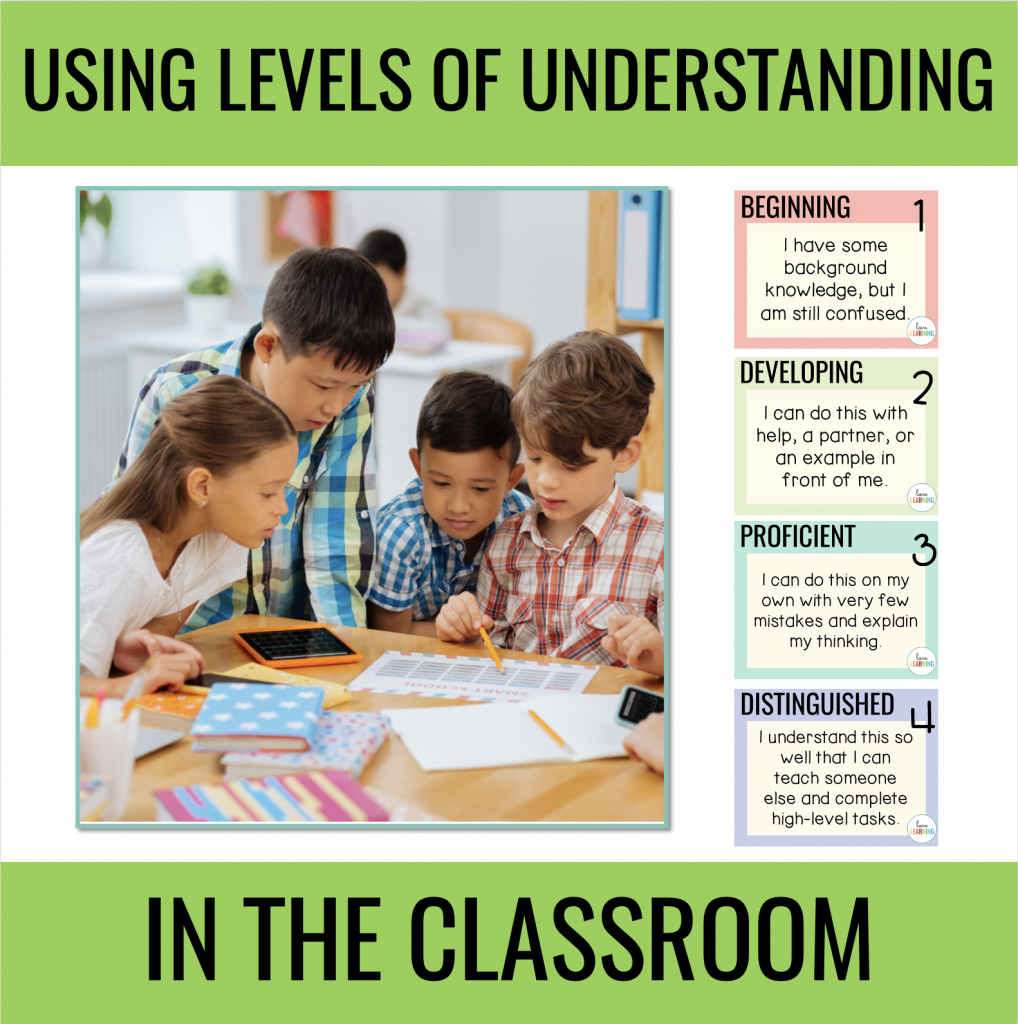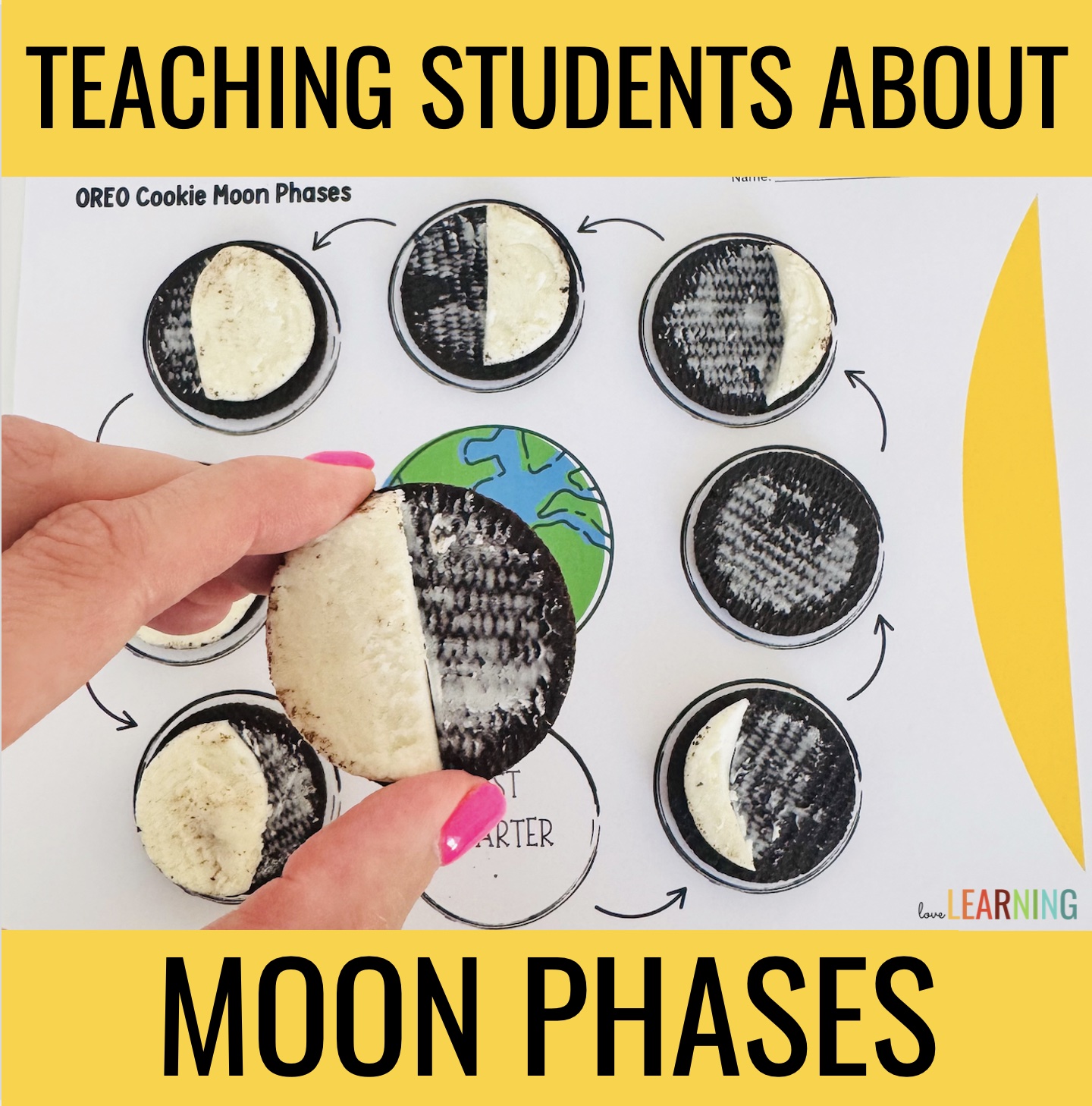
I have used levels of understanding in my 5th grade classroom for a few years now, and I can honestly say that it has not only changed the way my students think about their learning, but also how I reflect on my teaching. If you’re wondering how to use levels of understanding in your classroom, this post will walk you through exactly how I implement it—and why it works!
What Are Levels of Understanding?
Simply put, levels of understanding show the progression of learning and are often labeled with a level 1, 2, 3, or 4.
In my classroom, I use the words Beginning, Developing, Proficient, and Distinguished, which correspond to those levels. Other teachers use Novice, Apprentice, Master, and Expert.
The terminology doesn’t matter as much as the consistency and clarity. What’s most important is that students understand how learning develops and recognize where they are in the process.
How to Use Levels of Understanding in Your Classroom (Especially in Math!):
Since I teach math to two rotations of students each day, I primarily use this strategy during math instruction. But the great thing is, you can use levels of understanding in reading, writing, science, or social studies as well.
At the beginning of a math unit, I always start by referring to my levels of understanding posters. I have them displayed above my bulletin board.
For example, if I am starting a new unit on rounding decimals, we stop and discuss where we are in the learning process.
You ALREADY have some background knowledge!
Do my students have background knowledge about rounding decimals? Yes, because we have been learning about how to read, write, and compare decimals. They also learned how to round whole numbers in third and fourth grade.
This already builds their confidence! They know that although we are learning something new, they have some background knowledge to begin with.
Knowing how to use levels of understanding in your classroom means knowing when to pause and remind students that frustration is part of the learning process. They don’t need to “get it” right away. They can use their notes, lean on a partner, or come work with me in a small group.
I’ve helped many students push through their “math fears” just by showing them where they are on the scale and encouraging them to keep going.
This is where we will “live” for the beginning part of our new unit.
Learning a new math concept causes anxiety in some students. They don’t understand it right away, and some will want to shut down immediately. This is why I refer back to this level of understanding and remind them that IT’S OK to be frustrated. We are developing our knowledge and they should be using their notes, a partner’s help, or my help in small group.
I cannot tell you how many times I have helped a student push through their “math fears” just by reminding them that they are at a developing level of understanding and eventually they will become proficient.
This is our goal!
Some teachers will disagree with me and say that Level 4 is our goal, and I definitely always strive to get my students to level 4…but some students will remain at level 3 for a variety of reasons and I am completely ok with that.
In math, I am constantly telling my students to continue to push, I tell them to persevere, to not give up, and I tell them that they will become proficient eventually.
AND. THEY. DO.
Once they understand a math concept like rounding decimals, they realize that “I can do this on my own with very few mistakes.”
In my classroom, I constantly encourage students to persevere. I remind them: “You might not be there yet—but you will get there.”
There’s nothing like the moment when a student says, “I’m Proficient!” Their confidence skyrockets, and they start to believe in their ability to tackle tough content.
The distinguished level is a “push” further.
In a classroom, you will have three different types of learners. Those that are pushing through developing, those that are proficient, and those that are ready for a challenge and move on to the distinguished level of learning.
Now, I’ve had plenty of “experts” tell me that we should be giving students distinguished level assignments throughout math. As a teacher in the trenches, I’m going to agree to disagree on this one.
Yes – students should be challenged. They should work together with partners to solve challenging problems, BUT I’m not going to give my students who are at a “developing” level a “distinguished” level task no matter how much my county, math coach, or principal may tell me to do so. It will frustrate those students. They will shut down, and once they shut down, it’s VERY HARD to get them back to that level of confidence.
I save distinguished level tasks for students to have proved that they are at a “proficient” level first. ALL students love the challenge when they are ready for them!
Students that reach a level 3 quickly need these types of tasks earlier. They thrive on the challenge, but I also use these students to “teach” their peers. Students LOVE helping others (for the most part). There’s also something to be said about a little positive peer pressure to help students stay on task in math. 🙃
Want to Try It?
If you’re ready to start using this approach, I have Levels of Understanding Posters available in four different classroom styles:
They’re a simple, effective visual that supports everything I’ve shared about how to use levels of understanding in your classroom.
If you want to read more, here’s a fun idea for implementing a classroom economy!
Happy Teaching!

PIN THE IMAGE BELOW TO SAVE THIS POST FOR LATER!









